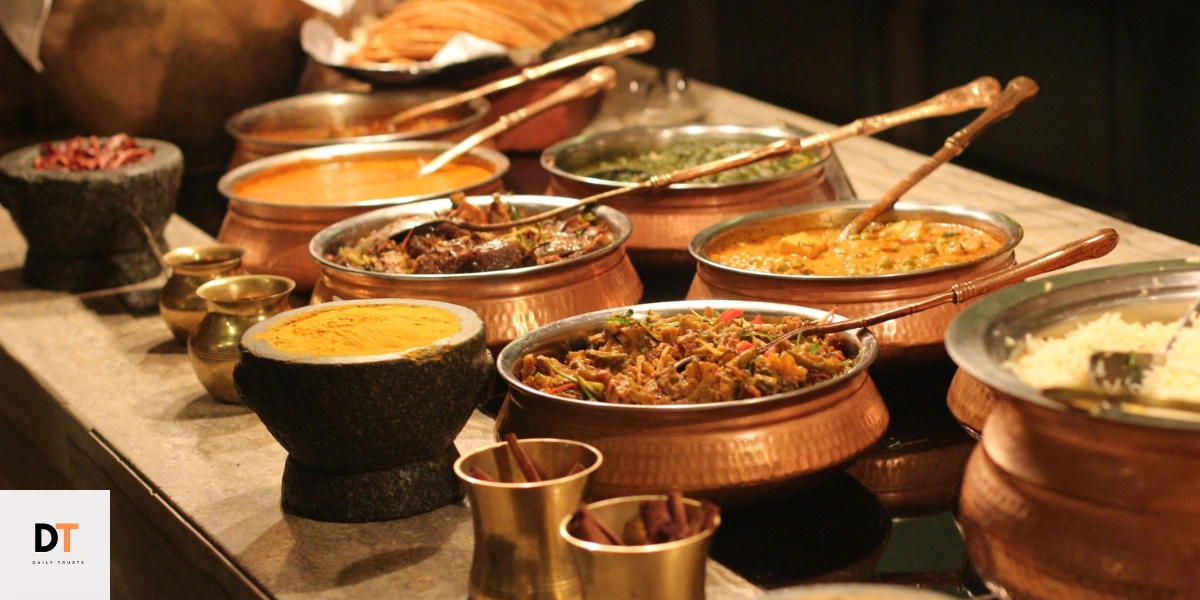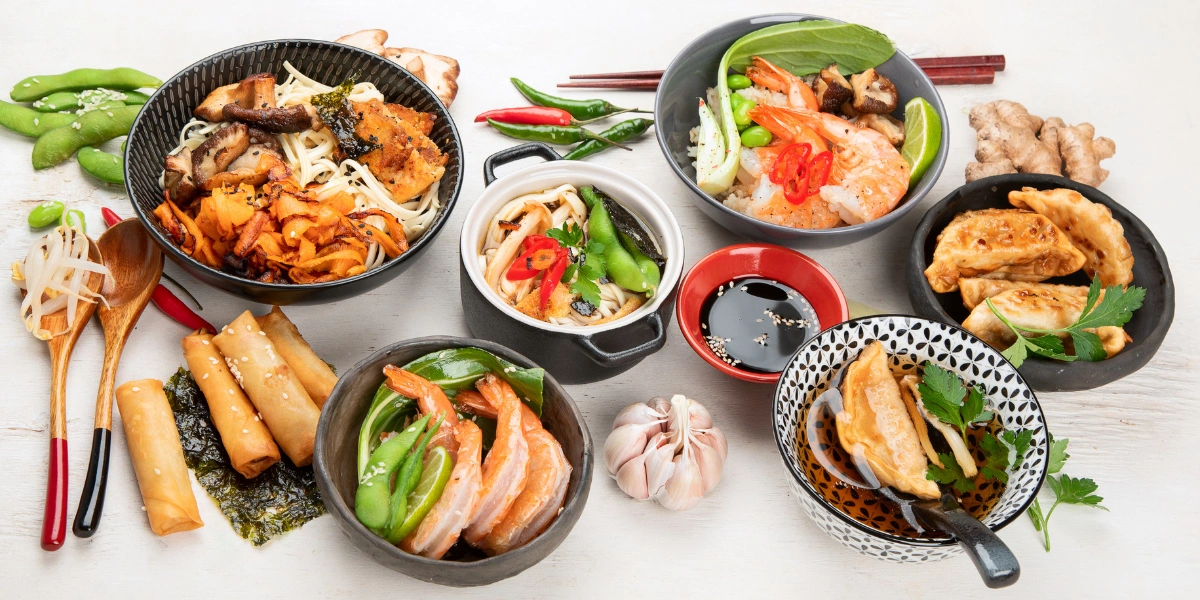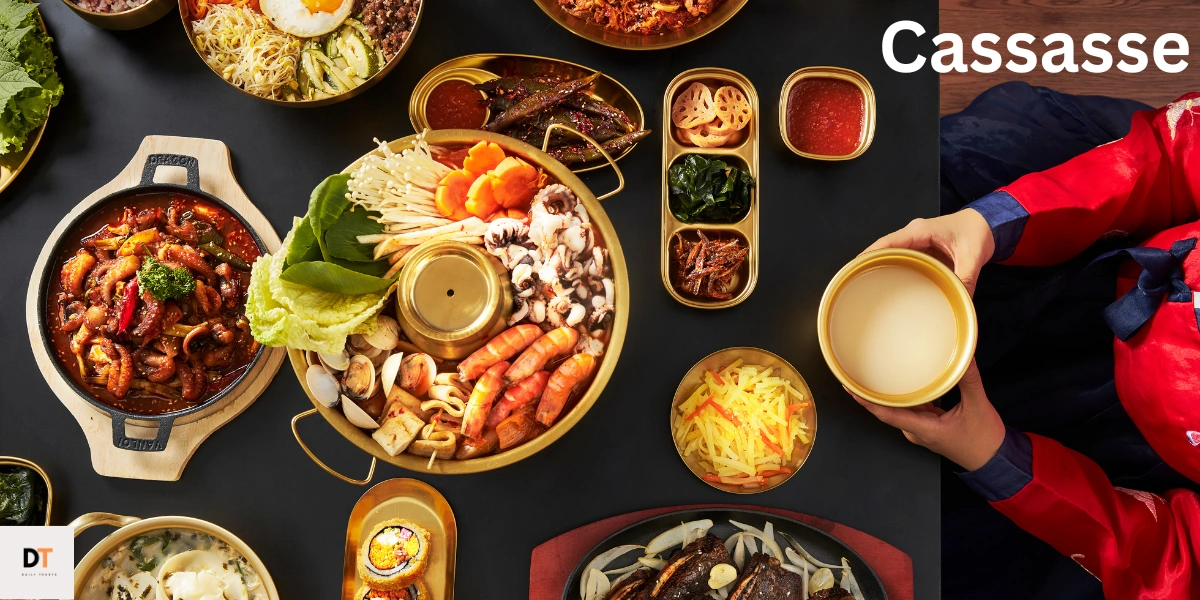What You Need To Know About Cassasse?
Cassasse is a unique and lesser-known alcoholic beverage that has been quietly gaining popularity among connoisseurs of fine spirits. The Caribbean originates this flavorful liqueur, which people often celebrate for its distinctive taste and cultural heritage. Distillers craft Cassasse using the cassava root, a starchy tuber widely cultivated in tropical regions, giving the drink its signature earthy and slightly sweet flavor profile.
The production process ferments and distills cassava, resulting in a smooth and versatile spirit that people can enjoy neat, on the rocks, or as a base for creative cocktails. While Caribbean traditions steep its roots, a global audience now embraces Cassasse, intrigued by its unique origin and exceptional taste.
Beyond its appeal as a beverage, Cassasse is a symbol of sustainability and innovation, as it utilizes a staple crop in a way that minimizes waste and supports local agricultural economies. Whether you’re a casual drinker or a seasoned spirits enthusiast, exploring Cassasse offers a delightful journey into a rich and vibrant cultural legacy, as well as a chance to discover a truly distinctive flavor experience.
also read:
5.56 vs 300 Blackout
What Is Cassasse?
West Africa is home to the ancient medicinal plant known as cassasse. Mali and Burkina Faso peoples have been using cassasse for millennia to treat a range of illnesses, from gastrointestinal problems to malaria. How Does It Appear? The cassasse bush can reach a height of six feet. It bears tiny white flowers and elliptical green leaves. The woody, light brown root is the portion utilized medicinally.
How Is It Used?
To extract its active ingredients, people often prepare cassasse root as a decoction by boiling it in water. Although the resulting tea tastes bitter, it packs healthy plant compounds such as terpenoids, tannins, and flavonoids. The uses of cassasse tea include:
- Treat malaria and fever. Cassasse root may help lower inflammation and has antipyretic properties.
- Reduce gastrointestinal issues such as worms, ulcers, and diarrhea. Cassia’s tannins have an antibacterial effect on the intestines.
- Reduce discomfort. Because of terpenoids such as betulinic acid, cassasse root seems to have analgesic effects.
- Increase your immunity. Cassasse’s flavonoids and other antioxidants may aid in immune system support.
Although further study is required, cassasse has the potential to serve as a natural treatment for a number of illnesses. Although people have long used the plant safely, you should always consult your doctor before taking any herbal product, including cassasse, for medical purposes. It could be worthwhile to explore this antique wonder.
Meaning of the word Cassasse
It takes more than just a definition to comprehend Casass. This has major implications for our understanding of the outside world.
1. Developing empathy
Cassass urges us to consider other people’s perspectives and acknowledge how our experiences are entwined with theirs. A stronger sense of community and more peaceful relationships might result from this sympathetic viewpoint.
2. Concern for the environment
Cassasse serves as a reminder of our connection to nature during a time when environmental concerns are at the forefront of public discourse. It engenders a sense of accountability for our shared earth.
3. Personal development
Personal development and self-awareness can result from taking Cassass. Understanding how we relate to other people can help us become more compassionate, empathetic, and self-aware.
Historical Background of Cassasse

1. Origins of Cassasse
The indigenous peoples of the Caribbean are the ones who originally used the regional components that would later form the basis of cassasse. Although historians disagree on its precise origins, it is thought that the term “Cassasse” originated from these early communities.
2. The Influence of Indigenous People
The primary constituents of cassasse were first cultivated and used by the native Arawak and Carib cultures. They were largely dependent on the spices, herbs, and root vegetables that were plentiful in their surroundings. The basis for what Cassasse would become was established by these early recipes.
3. European and African Contributions
The transatlantic slave trade and the entrance of Europeans caused changes in the Caribbean’s gastronomic scene. New materials and cooking methods introduced by African slaves merged with the customs already in place. Additionally, new elements were brought by European colonists, resulting in the distinctive fusion that defines Cassasse today.
A classic Caribbean dessert that has been loved for many generations is cassass. Since the dessert is typically made in a wooden box lined with banana leaves, the name “casass” comes from the French word “caisse,” which meaning box or coffin. Simple ingredients like cornmeal, coconut, sugar, and spices are used to produce this delicious dessert, but what really sets it apart is the method used to make it.
In this section, we’ll walk you through the process of creating a cash register step-by-step.
1. Prepare the box
Making the wooden box that will be used to manufacture cassava is the first step in the process. The rectangular box should be lined with clean banana leaves. The size of the box may vary depending on how many cassassi you intend to make.
2. Soak cornmeal
A key component of cassaßé is cornmeal, which must be soaked before being combined with other ingredients. Combine the cornmeal and water in a large basin and stir until the mixture takes on the consistency of a thick paste. The cornmeal should next be softened by letting this mixture sit for at least an hour.
3. Make Coconut Milk
Cassace gains taste and richness from the addition of coconut milk. Grate fresh coconuts (or use store-bought coconut flakes) and put them in a pot with water to make coconut milk. Remove from the water after bringing it to a boil over medium heat.
Cassasse in Daily Life
1. Role in Everyday Meals
Cassasse is a mainstay in many Caribbean homes and isn’t just saved for special occasions. Its substantial components provide comfort and sustenance, making it the ideal supper at any time of day.
2. Celebratory and Festive Occasions
During holidays and festivals, Cassasse takes center stage. It’s often prepared in large quantities and shared among family and friends, symbolizing unity and togetherness.
3. Symbolism and Cultural Significance
More than merely a dish, cassasse is a representation of ancestry and cultural identity. Caribbean people can stay connected to their heritage and preserve traditions by cooking and sharing this food.
Importance of Cassasse
Understanding this Cassasse phrase will reveal that it is more than just a definition of work because it has transcended its limitations. It is significant because it affects how we see the world around us.
1. Fostering Empathy
With Cassasse in place, we gain a better understanding of how to sympathize with others by developing the idea that their experience can blend with their own. A stronger sense of community can be attained by fostering a more amicable relationship.
2. Environmental Awareness
Cassasse brings us closer to nature in a world where environmental issues are becoming more pressing. This entails that we have a duty and a duty to care for the planet that we live on.
3. Personal growth
If we were asked directly, we would respond that cassasse is the primary factor that contributes to our sense of self-awareness and personal development. Empathy, compassion, and a deeper comprehension are brought about by connecting with people.
Nutritional Value of Cassasse
1. Health Benefits
In addition to being tasty, cassasse is nutrient-dense. Root vegetables provide essential vitamins and minerals, while the use of spices can have anti-inflammatory and antioxidant properties.
2. Nutritional Components
Vitamins A and C, fiber, and carbs are all abundant in a regular meal of cassasse. Protein is added by adding meat or lentils, which makes the meal well-balanced and nourishing.
3. Myths and Facts
Cassasses is the subject of numerous myths, including the idea that it is harmful or excessively heavy. In actuality, it may be a healthy and nourishing dish if made with natural, fresh ingredients.
Cassasse Across the Caribbean
1. Regional Variations
The forms of Cassasses vary from island to island. It may be called “Bouillon” in Haiti and “Sancocho” in the Dominican Republic. The distinct cultural influences of the area are reflected in each variety.
2. Unique Twists in Different Islands
Some islands incorporate their own distinctive touches, such as using tropical fruits to lend a touch of sweetness or including seafood in coastal areas. These variations highlight Cassasses’ adaptability and versatility.
3. Popularity and Cultural Differences
Although cassasses is a common dish in the Caribbean, there are significant differences in how it is prepared and consumed. While it’s a daily necessity in certain places, it’s only used on rare occasions in others.
The Nutritional Benefits of Cassasse
African tamarind, or cassasse, is a nutrient-dense superfood. When eaten, the pulp and seeds provide numerous health advantages.
1. Fiber
With more than 65% of your daily fiber requirements found in just one cup, cassasse is a great source of fiber. Fiber reduces cholesterol, promotes feelings of fullness, and supports intestinal health. Because of its high fiber content, cassasse can help with constipation and digestion.
2. Vitamin C
One cup of cassasse has a remarkable amount of vitamin C. Vitamin C supports the immune system, promotes collagen synthesis, and functions as an antioxidant. The development and maintenance of tissues in every area of your body depends on consuming enough vitamin C.
3. Magnesium
Additionally, cassasse will provide you with a good amount of magnesium, which is necessary for healthy bones, blood pressure control, and metabolism. Magnesium is essential for more than 300 bodily biochemical processes and aids in converting the food you eat into energy.
4. Potassium
Potassium, an essential mineral, and electrolyte, is found in cassasse. It aids in preserving your body’s electrolyte levels, pH equilibrium, and blood pressure. It permits muscles, nerves, and cells to operate as intended. Eating foods high in potassium, such as cassasse, may help lower the risk of stroke and high blood pressure.
Alongside other more well-known superfoods, cassasse deserves a position. Adding cassasse to your diet can have major nutritional benefits and enhance general health and wellness because of its combination of fiber, vitamin C, magnesium, and potassium. Cassasse is an essential fruit, whether it is consumed raw, juiced, or in jams and chutneys.
How to Enjoy Cassasse Recipe Ideas and Serving Suggestions?
There are numerous ways to enjoy cassasse. To help you get started, here are some recipe ideas and serving suggestions:
1. Fritters
Fritters made with cassasse fruit are wonderful. Just dip cassasse slices into a mixture of flour, egg, milk, and spices such as allspice, nutmeg, or cinnamon. Fry till golden brown in oil. Sprinkle with powdered sugar, then dig in!
2. Jams and Preserves
Cassasse’s tropical, tangy flavor complements jams, jellies, and preserves. Chicken the pulp by simmering it with sugar and lemon or lime juice. Spread over pancakes, scones, or toast.
3. Chutneys and Relishes
Make a chutney or relish with cassasse, vinegar, sugar, and spices like mustard seeds, cumin, or chili peppers for a savory side dish. Serve alongside fish, poultry, or pork.
4. Cocktails
Cocktails benefit greatly from cassasse’s unique flavor. Mix the fruit with citrus juices and rum to make a zesty margarita or daiquiri. Or combine it with sugar and mint to create a cool mojito.
5. Salads
For added nutrients and a tangy taste boost, mix cassasse into green salads. Add the chopped fruit, spinach or arugula, pecans or walnuts, and a little vinaigrette.
6. Desserts
A variety of sweets, including pies, tarts, crumbles, and crisps, can be made with cassasse. Its acidity complements ice cream or custard fillings nicely. Serve the fruit over yogurt or as a cheesecake topping after poaching it in a spiced wine or juice.
Because of its distinct tropical flavor, cassasse works well in savory and sweet recipes. Try adding it to some more of your favorite foods and beverages. Your palate will appreciate it!
The Future of Cassasse

1. Preserving Tradition
Traditional foods like cassasses must be preserved as the world grows more interconnected. Documenting cooking methods and recipes is essential to preserving this culinary legacy.
2. Innovation and Modernization
However, innovation is essential to Cassasses’s ongoing relevance. In order to appeal to newer generations and audiences around the world, contemporary chefs are coming up with fresh methods to modify the dish.
3. Influence of Global Cuisine Trends
The preparation and consumption of cassasses are being impacted by global culinary trends, including as the popularity of plant-based diets. Opportunities to disseminate this classic cuisine to a wider audience are presented by these trends.
Conclusion
Cassasse is a remarkable and multifaceted product with deep cultural roots and diverse applications. Whether as a traditional Caribbean beverage, a medicinal plant with ancient West African origins, or a versatile culinary ingredient, it holds significant historical and nutritional value. Cassasse reflects the ingenuity of its creators, blending sustainability, health benefits, and cultural traditions. Its rich, earthy flavor and adaptability in recipes—from cocktails to desserts—make it a unique addition to any table. Exploring Cassasse offers not only a delightful sensory experience but also a meaningful connection to heritage and wellness.
FAQs About Cassasse
1. How is Cassasse used in cooking?
Cassasse can be used in fritters, jams, chutneys, cocktails, desserts, and salads. Its tangy flavor and nutritional content make it versatile for both sweet and savory dishes.
2. Is Cassasse safe for consumption?
When prepared properly, Cassasse is safe to consume. However, if you’re using it as a medicinal product, consult a healthcare professional before use.
3. What does Cassasse taste like?
sasse has a unique earthy, slightly sweet, and tangy flavor, depending on its preparation.
4. Can Cassasse be used medicinally?
Yes, in West Africa, cassasse has been used to treat gastrointestinal issues, fevers, inflammation, and as an immune booster. It’s often consumed as a decoction made from its root.
5. Are there any myths associated with Cassasse?
One common myth is that Cassasse is unhealthy or too heavy. In reality, when prepared with natural ingredients, it can be a nutritious and wholesome addition to meals.
6. How can I incorporate Cassasse into my diet?
You can incorporate Cassasse by trying recipes such as cassasse fritters, jams, and chutneys, or even using it as a topping for desserts and salads. It’s also excellent as a base for cocktails.
7. Is Cassasse sustainable?
Yes, Cassasse production often utilizes local crops like cassava, promoting sustainability by minimizing waste and supporting local economies.
8. Are there regional variations of Cassasse?
Yes, Cassasse recipes and preparation methods vary across the Caribbean and West Africa, with unique twists such as the inclusion of tropical fruits, seafood, or different spices.
9. What Exactly Is Cassasse?
Cassasse is a term with varied meanings, ranging from a Caribbean alcoholic beverage to a versatile ingredient or even a medicinal plant. Its diverse uses and cultural significance make it unique. People are drawn to Cassasse for its distinctive flavor, versatility, and health benefits. Whether used in drinks, meals, or remedies, it offers something special.
10. Why Do People Like Cassasse?
People enjoy Cassasse for its rich flavor and adaptability in various recipes. Beyond taste, it has cultural significance and offers health benefits such as improved digestion and immunity. Its traditional roots add to its appeal.
11. How Can Beginners Learn About Cassasse in 2023?
For those new to Cassasse, this guide covers everything you need to know. From its origins and uses to its benefits, it’s perfect for beginners. Learn how to incorporate this unique product into your diet or lifestyle in easy and fun ways.


